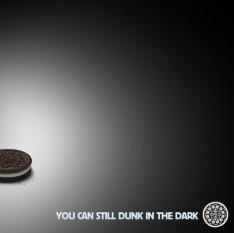A tactical approach
 Forget million dollar budgets and hours of production, fast turnaround ads are getting the attention of consumers. Nic Christensen looks at how a biscuit used social media to beat the most lucrative advertising spot of our time and explores Australian advertisers that are getting tactical.
Forget million dollar budgets and hours of production, fast turnaround ads are getting the attention of consumers. Nic Christensen looks at how a biscuit used social media to beat the most lucrative advertising spot of our time and explores Australian advertisers that are getting tactical.
Most advertisers spend months and millions of dollars preparing their Super Bowl campaigns but, last week, Oreo Cookies showed what a brand can do in just minutes with the right ad.
Fast turnaround advertising is nothing new, but as a blackout plunged the Superdome in New Orleans into darkness, US digital agency 360i were quick to act.
The blackout lasted 34 minutes but it took the 360i team assembled inside the agency’s ‘social media command centre’ half that time to produce, get sign off and distribute what became the most talked-about ad of the 2013 Super Bowl.


aussie tacticals much clever than US attempts. nothing clever about Oreo ad.
another example of how advertising is becoming more and more PR-led
people are sick of reading ads, but they’ll keep reading editorial content or copy that looks like it
hopefully this augers well for laid off journos looking to get into advertising
much more clever!